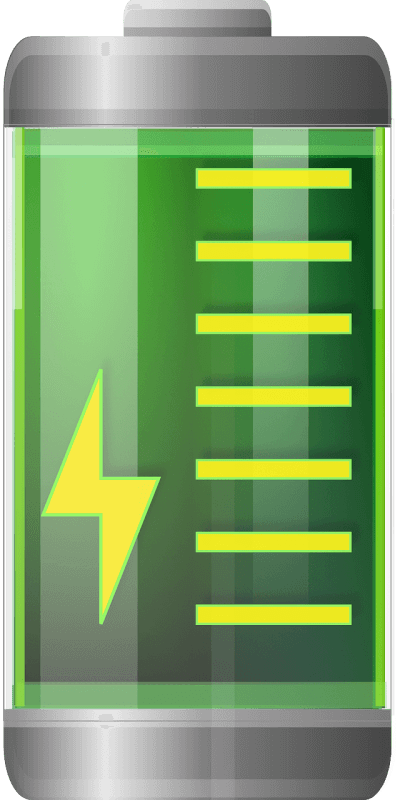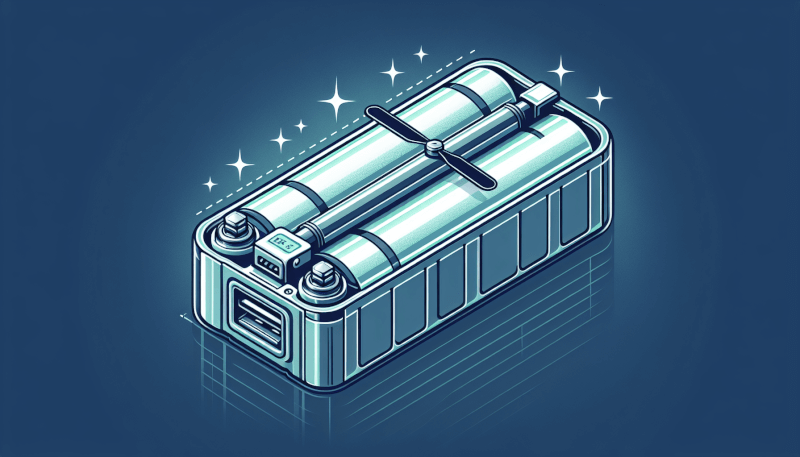So you’ve invested in a high-quality RC heli and want to ensure that its battery lasts as long as possible? Look no further, because we’ve got you covered! In this article, we’ll be sharing some top tips that will help you extend the lifespan of your RC heli battery. From proper charging techniques to storage precautions, we’ll provide you with all the essential information you need to keep your RC heli soaring through the skies for countless hours of enjoyment. Get ready to unleash the full potential of your RC heli and double the fun with these simple yet effective battery-saving techniques!

Choose the Right Battery
When it comes to maximizing the lifespan of your RC heli battery, choosing the right one is crucial. Consider both the voltage and capacity of the battery to ensure it meets the requirements of your RC heli. The voltage is important as it determines the power output, while the capacity determines how long the battery will last before needing to be recharged. By selecting a battery with the correct voltage and capacity, you can ensure optimal performance and longevity for your RC heli.
In addition to voltage and capacity, it is also important to look for high-quality brands. Investing in a battery from a reputable manufacturer can make a significant difference in terms of performance and durability. High-quality batteries tend to have better internal components and are built to withstand the demands of RC heli flying. While they may be slightly more expensive, they offer better reliability and can ultimately prolong the life of your RC heli battery.
Proper Handling and Storage
To extend the lifespan of your RC heli battery, it is essential to handle and store it properly. Avoid dropping or impacting the battery, as this can damage the internal components and reduce its overall performance. Treat the battery with care and ensure it is securely fastened in your RC heli during flight to minimize the risk of accidents or damage.
When not in use, store the battery in a cool and dry place. Extreme temperatures can have a negative impact on the battery’s performance and lifespan. Optimal storage temperature for most RC heli batteries is around 68°F (20°C). Avoid storing the battery in areas with high humidity or direct sunlight, as these conditions can lead to moisture build-up and potential damage.
During transportation, it is advisable to use a protective case for your RC heli battery. This helps to shield the battery from any external impacts or vibrations that may occur during transit. A protective case provides an additional layer of protection and ensures the battery remains safe and secure throughout the journey.
Charge Correctly
Proper charging techniques are essential for maximizing the lifespan of your RC heli battery. Always follow the manufacturer’s instructions to ensure you are charging the battery correctly. Each battery may have specific requirements regarding charging time, voltage, and current.
It is important to use a compatible charger that is designed for your specific battery. Using the wrong charger can lead to overcharging or undercharging, both of which can be detrimental to the battery’s health and longevity. Investing in a high-quality charger that offers advanced charging features such as overcharge protection and balance charging can help ensure a safe and effective charging process.
Monitoring the charging process is also essential. Regularly check the charging status and voltage levels to ensure they are within the recommended range. Avoid leaving the battery unattended while charging and remove it from the charger once it is fully charged to prevent overcharging.
Balance Charging
When it comes to maintaining the health of your RC heli battery, balance charging is a crucial technique. Balance charging ensures that each cell within the battery pack is charged evenly, preventing imbalances and prolonging the overall lifespan of the battery.
To implement balance charging, you will need a balance charger specifically designed for your RC heli battery. This charger is equipped with individual connectors for each cell and can monitor and charge each cell independently. During the charging process, the balance charger ensures that each cell is charged to the same voltage level, preventing imbalances that can lead to decreased performance or even damage.
It is essential to closely monitor the voltage levels of each cell during the balance charging process. If any cell is significantly lower or higher in voltage compared to the others, it may indicate an issue and should be addressed. By regularly performing balance charging, you can ensure that all cells within the battery pack are operating optimally and maximize the lifespan of your RC heli battery.

Avoid Deep Discharging
Deep discharging, or draining the battery completely, can significantly reduce the lifespan of your RC heli battery. It is important to know the recommended minimum voltage for your specific battery and avoid going below this threshold during flight.
To prevent deep discharging, set a low voltage cutoff on your RC heli. This feature automatically reduces power output or triggers a warning when the battery voltage drops to a preset level. By setting a low voltage cutoff, you can ensure that you never drain the battery completely and preserve its health and longevity.
If you notice a significant drop in voltage during flight, it is important to recharge the battery as soon as possible. Continuing to fly with a low voltage can lead to irreversible damage to the battery cells and result in a shorter lifespan.
Proper Discharging
In addition to avoiding deep discharging, proper discharging techniques can also contribute to extending the lifespan of your RC heli battery. Avoid constantly operating at high throttle levels, as this can put a strain on the battery and decrease its overall performance.
Implement throttle management techniques during flight to regulate power usage and minimize stress on the battery. Avoid sudden bursts of full throttle and instead maintain a steady throttle level suitable for your intended maneuvers. By practicing throttle management, you can ensure a more consistent power flow and maximize the battery’s lifespan.
Allowing the battery to cool down between flights is also important for maintaining its health. After an intense flight session, give the battery time to rest and cool down before recharging or using it again. This helps prevent overheating and allows the internal components of the battery to recover, ensuring optimal performance and longevity.

Regular Maintenance
Regular maintenance plays a key role in prolonging the lifespan of your RC heli battery. Periodically inspect the battery for any signs of damage or swelling. Damaged or swollen batteries should not be used, as they pose a safety risk and may indicate internal issues. Replace any damaged connectors or wires to ensure proper connections and prevent potential malfunctions.
Cleaning the battery connectors is also important for maintaining good electrical conductivity. Dirt, debris, or corrosion on the connectors can hinder the flow of power and affect the battery’s performance. Use a clean cloth or a mild electrical contact cleaner to gently clean the connectors and ensure a secure and reliable connection.
Temperature Control
Proper temperature control is vital for optimal battery performance and lifespan. Avoid exposing the battery to extreme temperature conditions, as this can have detrimental effects. High temperatures can lead to increased internal resistance and accelerated chemical reactions, shortening the battery’s lifespan. Similarly, charging or discharging the battery in high temperatures can cause overheating and compromise its overall health.
Before charging the battery, allow it to cool down to room temperature. Charging a hot battery can increase the risk of overcharging and reduce its lifespan. Similarly, after a flight, let the battery cool down before storing or recharging it. By maintaining the battery within the recommended operating temperature range, you can prolong its life and ensure optimal performance.

Avoid Overloading
Overloading your RC heli battery can put excessive strain on its cells and significantly decrease its lifespan. It is crucial to know the maximum current draw of your RC heli and avoid exceeding this limit. Excessive accessories or modifications that draw extra power can increase the overall load on the battery and reduce its longevity.
Calculate the power usage of all the components and accessories you plan to use and distribute the load evenly across your battery pack. This helps prevent any individual cell from being overloaded and allows for a more balanced power distribution. By avoiding overloading, you can ensure the battery operates within its limitations and maximize its lifespan.
Proper Disposal
When it is time to dispose of an old or damaged RC heli battery, it is important to do so responsibly. Follow local regulations for battery disposal and do not throw batteries in regular trash. Batteries contain hazardous materials that can harm the environment if not disposed of properly.
Instead, look for designated facilities or recycling centers that accept batteries for proper disposal or recycling. Many communities have specific collection points for batteries, making it easy to dispose of them safely. By properly disposing of your RC heli batteries, you contribute to protecting the environment and ensuring the safe handling of potentially harmful substances.
In conclusion, extending the lifespan of your RC heli battery requires careful consideration and proper maintenance throughout its lifecycle. By choosing the right battery, handling and storing it correctly, charging it properly, and following maintenance and safety guidelines, you can maximize its performance, longevity, and overall value. With these top tips in mind, you can enjoy extended flight times and countless hours of exhilarating RC heli flying.



